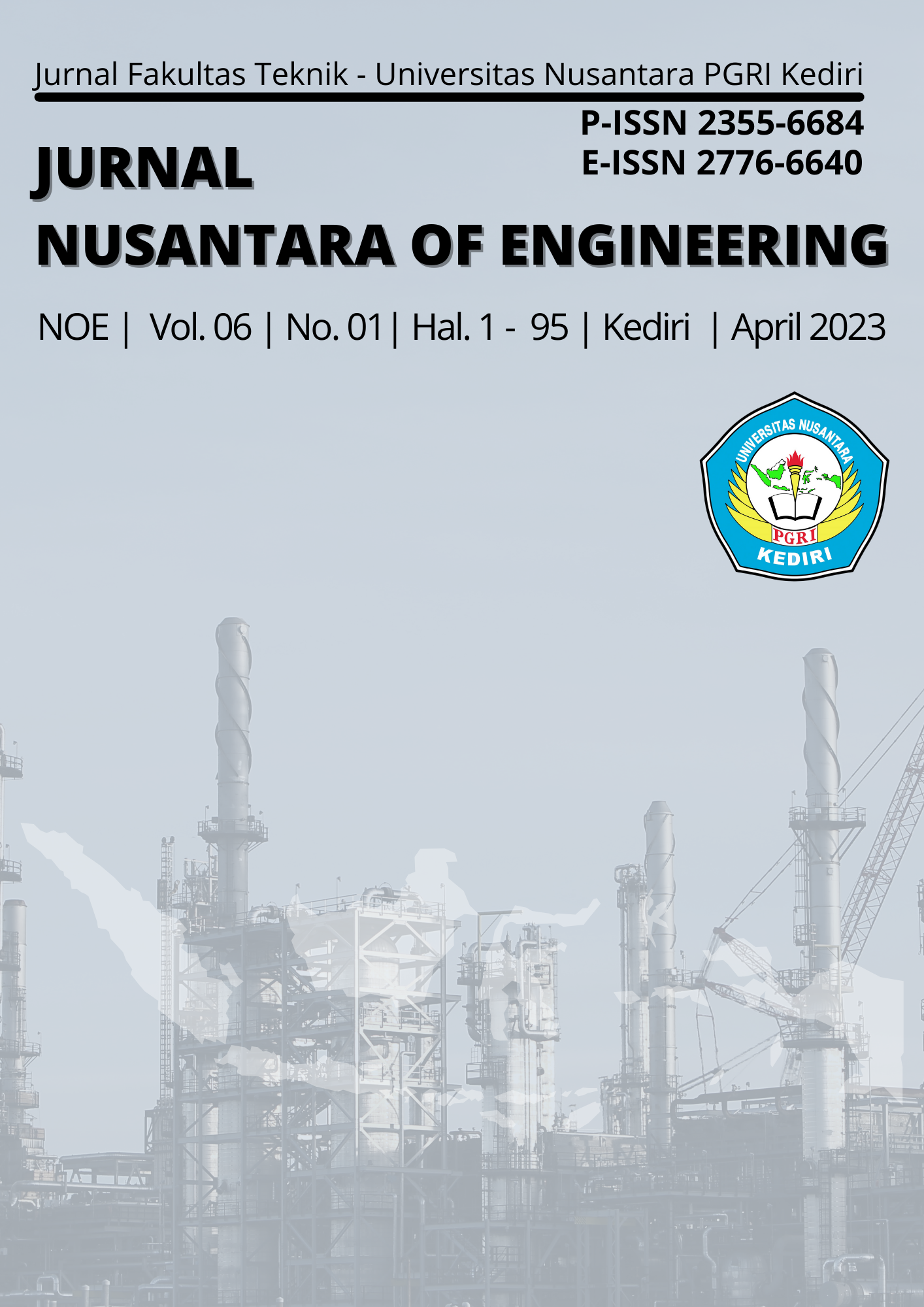USULAN PERBAIKAN KUALITAS PRODUK RANTAI BOILER MENGGUNAKAN METODE SIX SIGMA DAN TRIZ
DOI:
https://doi.org/10.29407/noe.v6i1.19632Keywords:
Kualitas, DMAIC, Six Sigma, TRIZ, Produk CacatAbstract
The problem that occurs at CV Sri Rejeki is that there are products that do not meet standards or defective products. Types of defective products include uneven surfaces and product shapes that do not match the mould. Defects that occur are caused by an Uneven Surface, which is caused during the process of pouring liquid metal into the mold, the pouring temperature is too low and the product shape does not match the mold, which is caused by the liquid metal raw material used is too bad and the pouring time is too long. This research method uses six sigma with DMAIC stages (Define, Measure, Analyze, Improve, and Control) with the help of pareto charts, and the TRIZ method (Teoria Rechenia Izobretatelskih Zadatchi). The biggest defect presentation is the uneven surface with a percentage level of 54%. The overall average DPMO value is 126920.25 and the sigma value is 2.65. From the fmea calculation, the highest RPN result is found in the expertise of workers with a scale value of 112. The proposed improvement is by holding routine training for employees at least 3 times a month at a mutually agreed time, as well as updating SOPs and printing them to minimize the occurrence of defective products. Also before carrying out the process of smelting raw materials, a separation process is carried out between feasible and inappropriate raw materials
Downloads
References
Anggraini, Y. N. (2021). Usulan Penerapan Metode Six Sigma Dan Theory Of Inventive Problem Solving (Triz) Untuk Upaya Mengurangi Produk Defect Pada Proses Produksi Core Board Paper (Studi Kasus: Pt. Papertech Indonesia, Subang).
Bisnis, J. A., Tenny, B., Tamengkel, L. F., Program, D. D. S. M., Bisnis, A., & Administrasi, J. I. (2018). Analisis Pengendalian Kualitas Mutu Produk Sebelum Eksport Dengan Mengunakan Metode Six Sigma Pada PT. Nichindo Manado Suisan (Vol. 6, Issue 4).
Gaspersz, Vincent. (2002). Pedoman Implementasi Program Six Sigma Terintegrasi dengan ISO 9001 : 2000, MBANQA & HACCP. Jakarta : PT Gramedia Pustaka Utama.
Harahap, B., Parinduri, L., Ama, A., & Fitria, L. (2018). Analisis Pengendalian Kualitas Dengan Menggunakan Metode Six Sigma (Studi Kasus : PT. Growth Sumatra Industry). In Cetak) Buletin Utama Teknik (Vol. 13, Issue 3). Online.
Indrawati, Sri. (2020)."Analisis Pengendalian Kualitas Menggunakan Integrasi Six Sigma dan Triz pada Produksi Blockboard (Studi Kasus: PT. Phoenix Agung Pratama)."
Izzah, N., & Rozi, M. F. (2019). Analisis Pengendalian Kualitas Dengan Metode Six Sigma-Dmaic Dalam Upaya Mengurangi Kecacatan Produk Rebana Pada UKM Alfiya Rebana Gresik. Jurnal Ilmiah Soulmath : Jurnal Edukasi Pendidikan Matematika, 7(1), 13–26. https://doi.org/10.25139/smj.v7i1.1234
Jorghy, A. (2021). Analisis Pengendalian Kualitas Produk Plywood Menggunakan Integrasi Six Sigma Dan Triz (Studi Kasus: Pt. Abioso Batara Alba).
Putri, T. A., & Alfareza, M. N. (2019). Pengendalian Kualitas Produk Kaos Menggunakan Metode Six Sigma (Studi Kasus pada Konveksi X di Yogyakarta).
Setia Bakti, C., Kartika, H., & Raya Meruya Selatan, J. (2020). Analisa Pengendalian Kualitas Produk Ice Cream Dengan Metode Six Sigma.
Sirine, H., Kurniawati, E. P., Pengajar, S., Ekonomika, F., Bisnis, D., & Salatiga, U. (2017). Pengendalian Kualitas Menggunakan Metode Six Sigma (Studi Kasus pada PT Diras Concept Sukoharjo). In AJIE-Asian Journal of Innovation and Entrepreneurship (Vol. 02, Issue 03). http://www.dirasfurniture.com
Sucipto, S. D. 2017. Pengendalian Kualitas Pengalengan Jamur Dengan Metode Six Sigma di PT Y, Pasuruan, Jawa Timur. Industria: Jurnal Teknologi dan Manajemen Agroindustri 6.1, 1-7.
Downloads
Published
Issue
Section
License
Authors who publish with this journal agree to the following terms:
- Copyright on any article is retained by the author(s).
- The author grants the journal, right of first publication with the work simultaneously licensed under a Creative Commons Attribution License that allows others to share the work with an acknowledgment of the work’s authorship and initial publication in this journal.
- Authors are able to enter into separate, additional contractual arrangements for the non-exclusive distribution of the journal’s published version of the work (e.g., post it to an institutional repository or publish it in a book), with an acknowledgment of its initial publication in this journal.
- Authors are permitted and encouraged to post their work online (e.g., in institutional repositories or on their website) prior to and during the submission process, as it can lead to productive exchanges, as well as earlier and greater citation of published work.
- The article and any associated published material is distributed under the Creative Commons Attribution-ShareAlike 4.0 International License








